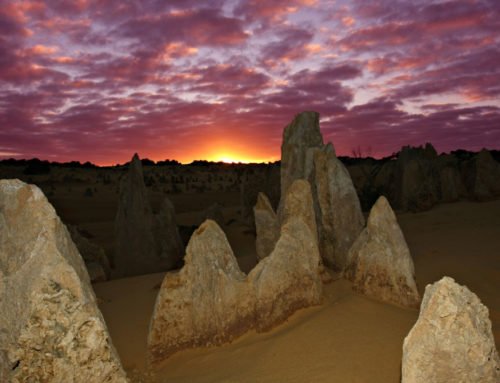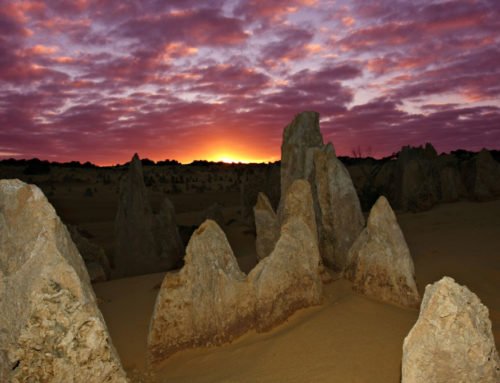Overview
- Features: Unique biological formations
- Opening Times: Daytime, daily
- Best Time to Visit: September to November
- Duration: 30 mins to 1 hr
- Travelled By: Rental car
- Cost: Free
- Address: Cervantes, Western Australia
- Type: Lake
Author Reviews[display_rating_item_results rating_form_id=”2″ rating_entry_ids=”1″ show_category_filter=”false” show_options=”true” result_type=”star_rating” preserve_max_rating=”true” show_title=”false” show_count=”false” ]
Total Rating: [display_rating_result rating_form_id=”2″ show_count=”false” show_rich_snippets=true] [accordions load=”1″] [accordion title=”User Reviews” last] [display_rating_item_results rating_form_id=”5″ show_options=”true” result_type=”star_rating” preserve_max_rating=”true” show_title=”false” show_count=”true” show_rich_snippets=true] [/accordion] [accordion title=”Add Review”][display_rating_form show_email_input=”true” show_comment_textarea=”true” show_name_input=”true” rating_form_id=”5″] [/accordion] [/accordions]
Summary
If you’re in Cervantes, you must take a detour to visit Lake Thetis to view the unique marine stromatolites here. These stromatolites contain fossil remains which date from more than 3.5 billion years ago, thereby providing the most ancient records of life on Earth.
Lake Thetis Stromatolites Cervantes
Cervantes is home to some of the most bizarre and wonderful attractions I must admit. While most people come to Cervantes to visit the Pinnacles Desert in Nambung National Park, you must take a detour 2kms south of Cervantes to see another bizarre sight – Lake Thetis.
This tidal lake has salinity levels twice as high as the ocean, creating perfect conditions for the formation of ‘stromatolites’, the oldest and largest living fossil known to man. Stromatolites provide the most ancient records of life on Earth by fossil remains which date from more than 3.5 billion years ago.
In Western Australia, there are two locations where stromatolites can be found. One location is here, the other is Hamelin Pool, in Shark Bay.
The lake is one of only a few places in the world with living marine stromatolites. The Lake Thetis stromatolites exhibit unusual columnar branching. These narrow, closely spaced and almost parallel columns are extremely rare in modern stromatolites.
When you get to Lake Thetis, walk out the board walk and glance over to the water’s edge. It takes a couple of seconds to figure out what you’re looking at because, at first glance the formations in the water look like aged, porous stones. On closer inspection, you will see narrow, closely spaced and almost parallel columns that are made up of fossilized microbes.
The stromatolite community is threatened by nutrient enrichment and physical crushing. An interim recovery plan is currently being written which will provide direction to further protect this extremely valuable community for future generations.
In March 2008, a new entry road and car park, as well as walkways on the shore of the lake were constructed. Additionally, a disused rubbish pit on the northern side of the lake is being rehabilitated and this has eliminated threats associated with rubbish disposal.
When you visit Lake Thetis, try to walk along the board walk and take your rubbish with you when you leave so as not to damage the soil.





Is there any public transport to Cervantes?
The public transport options in Western Australia is not reliable so it is not recommended. The best way to get to Cervantes is to hire a rental car from Perth and drive here or go on a tour. If you’re staying in a hostel or YHA in Perth, you can try to organise a trip with other people.